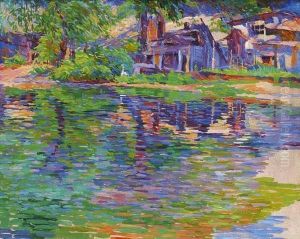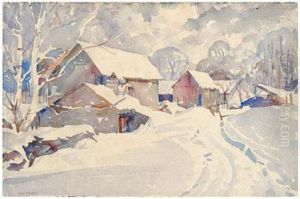John Pierce Barnes Paintings
John Pierce Barnes was an American artist known for his work as a painter, illustrator, and educator. Born on June 27, 1893, in Washington, D.C., Barnes was part of the early 20th-century American art movement. His artistic journey began at a young age, influenced by the cultural environment of Washington, D.C., and the proximity to its many museums and galleries.
Barnes studied at the Corcoran School of Art in Washington and later at the Pennsylvania Academy of the Fine Arts, where he was under the tutelage of renowned artists such as Cecilia Beaux and Hugh Breckenridge. His education continued in Europe, where he was exposed to the works of the Old Masters, and he absorbed the influences of Impressionism and Post-Impressionism that were prevalent during that time. This exposure to European styles and techniques significantly influenced his artistic development.
Upon returning to the United States, Barnes embarked on a career that combined both his passion for art and his interest in education. He became an instructor at the Carnegie Institute of Technology (now Carnegie Mellon University) in Pittsburgh, Pennsylvania, and later at the Moore College of Art and Design in Philadelphia. Barnes was dedicated to fostering the talents of his students, and he played a significant role in shaping the educational methods of art instruction during his tenure.
As a painter, Barnes' work encompassed a variety of subjects, including portraits, landscapes, and urban scenes. His style evolved throughout his career, reflecting the changes in American art movements from realism to more expressive and abstract forms. Barnes exhibited his work in numerous galleries and museums, and his paintings are now part of several art collections.
Throughout his life, Barnes remained actively involved in the art community, participating in artists' organizations and exhibitions. His commitment to art and education left a lasting imprint on the American art scene of the early to mid-20th century. John Pierce Barnes passed away on November 15, 1954, leaving behind a legacy of artistic contributions and a generation of students influenced by his teachings and philosophy on art.

